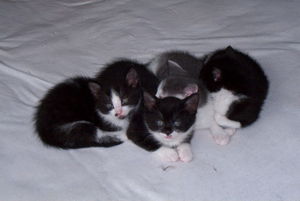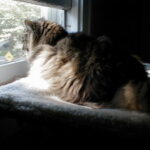Your cat seems to love just being with you. She doesn’t seem to even need other cats. In fact, she gets irritated, even aggressive, when another feline roams too close to her home. And yet, it doesn’t quite make sense. Cats are extremely social with each other when they have been brought up together. So are cats social animals or not?
Feline Social Structure
Many human companions will boast–or maybe complain–about how independent their cats are, seemingly not needing other cats and sometimes not even people. Recent studies show that cats do have a social structure and do relate to other cats, but it is quite different from the “pack” nature of dogs and that of humans. Therefore, cats do like to be with other cats-but don’t have to be with them.
It all depends on a cat’s individual genetic make-up and how he or she was raised,” says Stefanie Schwartz, DVM, MSc, DACVB, board certified veterinary behaviorist at VCA South Shore Animal Hospital in Weymouth, Massachusetts. “From three to seven weeks of age is a period of critical development in a kitten’s life. Positive social experiences with people and other kittens usually provide a positive template for all other future interactions with people, other cats and maybe other animals.”
Feline genetic make-up allows cats maximum flexibility to survive alone or with other cats in the wild, in single or multi-cat homes or on a farm with lots of cats, says Dr. Schwartz. “That is quite marvelous. Cats are made to be sociable, but they can also survive alone if they need to.”
The best example of a social order among felines is the lion. A pride of lions is composed of a single male or brothers and a large harem of related females made up of mothers, daughters, sisters and aunts. Lions seem to communally hunt and take care of the young. And they maintain a certain hierarchy within the pride.
Within a group of cats living together, the social structure is matriarchal-very similar to that of the pride. Cats who are socially bonded will sleep close to each other, while they will sleep apart from cats they are not as close to. Family members who have grown up together are preferred to outsiders.
You can really observe natural communal behavior among groups of feral (untamed cats). Again, this is very much like the behavior in a lion pride. Cats in a colony will groom each other, touch noses (a feline way of welcoming) and may even take care of each other’s kittens.
Territory and Dominance
While very influential in affecting behavior in dogs, territory and dominance in cats are more complicated issues. In fact, the two may overlap. There seems to be a time sharing of space by cats,” says Dr. Schwartz. Whether outdoors or at home, “cats who like or tolerate each other will often use the same space or paths at the same time of day. If two cats don’t like each other, they will change the route or time of day they use the space. Or one-usually the less dominant cat-will avoid the space altogether.”
Cats come with a variety of facial expressions and body gestures that enable them to socialize. “Cats have twice as many vocalizations as do dogs,” Says Dr. Schwartz. “Some of these vocal sounds enable them to communicate at a distance, but others are meant for intimate communication. This is additional proof that cats are social creatures.”
Cats will rub against each other to mingle their scents. This is one way that cats may also determine ranking. A subordinate or juvenile cat may rub up more against a ranking or older cat who may or may not reciprocate,” says Dr. Schwartz.
The Human/Feline Connection
It’s very intriguing to analyze the bond between cats and humans who live together. The mistake we often make is assuming a cat’s social nature is like that of humans or dogs. It is not, however, in that humans and dogs have a more innate need for clearly defined social structure.
Some experts believe that the human-feline bond resembles a mother-kitten relationship. After all, we feed them, play with them, protect them and groom them. Says Dr. Schwartz, “I don’t think it’s necessarily a parental relationship. I think cats see us as other beings who they rely on for their food and entertainment.”
You’ll notice how your cat will rub up against your legs or outstretched fingertips over and over. Besides greeting you, exchanging scents and expressing affection, he or she is recognizing you as the dominant one in the relationship-as your cat does with other cats.
We will never fully understand why cats need us one moment and avoid us the next, why they sometimes come to us and sometimes refuse, why they do one thing one day and just the opposite the next. But it’s just the feline mystique which makes us love them so.
Source:
This article originally appeared in a 2005 issue of CatWatch, a publication of the University of Cornell School of Veterinary Medicine. For more information on this publication, contact www.catwatchnewsletter.com




